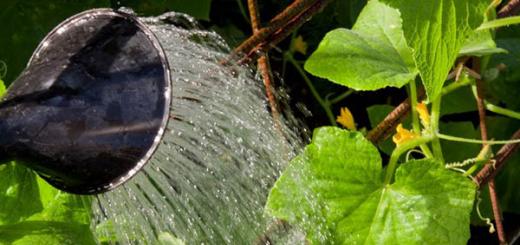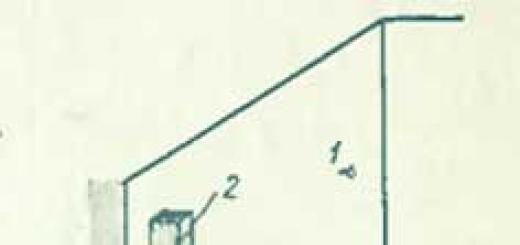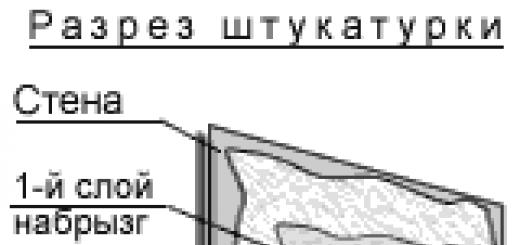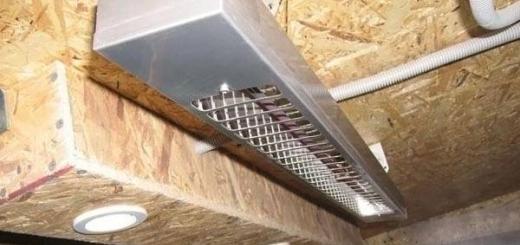Chillers have long been used to equip air conditioning systems. The scope of their use is quite wide: from offices and private homes, to medical institutions and large industrial workshops. The installations gained such popularity due to their high efficiency, ease of use, and variety of design options.
Depending on the installation location of the heat exchanger, chillers can be monoblock (the chiller itself and the condenser are located in the same housing) or with a remote condenser unit. More often, preference is given to a one-piece design, which also includes a pumping station. The most common option is systems with an air-cooled condenser. This design is mounted outdoors to ensure full air flow to the heat exchanger.
When is a remote capacitor used?
There are situations when it is necessary to separate the chiller and heat exchanger. If the installation is used in the warm season, it operates successfully in its usual modification. But if the air temperature drops and reaches negative values, the possibility of equipment failure due to water freezing increases. To avoid this, water is removed from the system and the chiller is preserved.
When it is necessary to ensure continuous operation of cooling equipment, water is replaced with a more expensive non-freezing liquid. The above procedures are quite labor-intensive and financially expensive, since they should only be performed by professional workers with relevant experience.
The task is greatly simplified if you use not a monoblock chiller, but one equipped with a remote condenser. In this case, you can do without draining or replacing the water with another liquid. The chiller and pumping station are placed in a separate room, which is heated, and the heat exchanger is taken outside, since it still requires a large amount of air flow.
The operating principle of the installation and its equipment do not change. The main elements of the chiller will be:
- Compressor block.
- Evaporator.
- Heat exchanger.
- Throttling device.
The only drawback is the need to create a route connecting the cooling unit and the condenser. It is also necessary to take into account the height difference between the blocks. Therefore, when selecting equipment, you should pay attention to these two parameters and determine in advance a convenient installation location.
Selecting a chiller in the Smart Trading catalog is not difficult; you can always count on the help of qualified managers who will not only recommend high-quality equipment at a competitive price, but also organize delivery and professional installation.
> Manufacture of refrigeration equipment > Liquid cooling units > Options and configurations of Vactekh chillers >
Chillers with remote condenser
Equipment "with remote condenser" used when it is impossible to place equipment with significant heat generation inside a workshop or engine room (for a rough estimate, the heat release in the condenser (in kW) is 30% higher than the cooling capacity of the chiller (in kW)). The chiller itself is installed in the heated room, and the air-cooled condenser is mounted on the roof, next to the building or on the wall of the building. For some eastern regions of Russia, where winter temperatures remain at -30...-35C for a long period of time, this is the only option for equipping water-cooling units with a cooling capacity of more than 50-100 kW. When ordering a chiller with a remote condenser, the customer is supplied with two modules: a refrigeration unit (the chiller itself) and an air-cooled condenser. Depending on the performance of the installations, they are equipped with remote capacitors of our own production, manufactured by the company Searle(England) or HTS(Czech Republic).
If a chiller with a remote condenser is operated in winter (at ambient temperatures below 0 C), then it is equipped with a winter start-up system, which is a system of bypass valves in the freon circuit, which allows the chiller to turn on after a long stay at low ambient temperatures. All valves for the winter start-up system are built into the refrigeration unit during its manufacture.
Large premises such as entertainment or shopping centers, hospitals, hotels, production workshops and warehouses require a special air conditioning system. It should be closely related to the operation of heating and ventilation systems, and it is desirable that it not only cools the air, but also humidifies or dehumidifies it, depending on the characteristics of the building. And today air conditioning systems built on the basis of chillers cope best with such tasks.
What does such a system provide?
Chiller- or special refrigeration station - considered one of the most effective types of climate control equipment, which allows you to create optimal temperature and humidity conditions in any room. Its main function is to cool the water, after which pumping units transport cold water through pipelines into the building. At the same time, chillers can be very diverse, but a system built on their basis always has many advantages:
- she gives maximum efficient cooling(or heating if required)
- it is economical- chillers do not consume too much electricity compared to other types of climate control equipment,
- she it's not too expensive o - the user will spend the most only when he develops the air conditioning system - this is the most energy-intensive part of the entire project, but it will quickly pay off,
- she multivariate- depending on the needs of the building and its inhabitants, you can choose a variety of types of equipment equipped with a whole range of special elements.
What types of chillers are there?
There are different versions of these units on sale, but only 6 varieties are considered the main ones.
1.  Chiller equipped with an air-cooled condenser function.
Chiller equipped with an air-cooled condenser function.
As a rule, such equipment operates on water, which acts as a coolant. This option is considered very economical and at the same time easy from the point of view of design and subsequent installation, however, air-cooled chillers also have a number of disadvantages. Among them:
- the ability to work only at positive temperatures,
- lack of regulation of high sound pressure levels (its indicators often go off scale beyond 62 dBA),
- the ability to completely defrost the chiller if the water was not drained completely or at the wrong time.
2.  Chiller equipped with an air-cooled condenser function in outdoor installation and operating with non-freezing liquids.
Chiller equipped with an air-cooled condenser function in outdoor installation and operating with non-freezing liquids.
As a rule, glycol acts as a heat exchanger and coolant in this situation, but it can also be water. Such a refrigeration station operates in a schedule of 5/10 degrees, and the chilled water after the heat exchanger has parameters of 7/12 degrees.
The advantages of this system are:
- the user does not need to empty the hydraulic system every season and then fill it again,
- The chiller evaporator never defrosts,
- the system is able to operate even at negative temperatures outside,
- In winter, such a system can be integrated with a dry cooling tower for free air cooling.
On the other hand, such chillers also have disadvantages. Among them:
- quite high price (compared to the previous model they cost about 30% more),
- higher energy consumption (due to glycol),
- lower coolant temperature,
- presence of a second hydraulic circuit,
- the need to use additional automation to prevent defrosting of the heat exchanger when the system is first started in winter after a long period of inactivity.
3.  Chiller equipped with an integrated cooling tower.
Chiller equipped with an integrated cooling tower.
This equipment makes it possible to implement free cooling in cold seasons, and the automation independently selects the optimal operating mode - operation of only the cooling tower, operation of only the compressor or mixed mode. This allows for maximum energy savings, which makes such a system very economical and allows the user to quickly recoup the costs of it.
Another advantage of this option is that a refrigeration station with such equipment can be used without intermediate heat exchangers.
4.  Chiller equipped with a remote condenser.
Chiller equipped with a remote condenser.
The system can serve effectively in certain conditions, but in most cases of operation it will only have disadvantages:
- such a chiller costs 30-40% more than the first type,
- the system cannot operate all year round in regions with cold climates,
- free cooling can only be achieved if the system works exclusively for this function,
- there should be a small distance between the chiller and the condenser, not exceeding 30 m,
- the system contains too much freon,
- To install such a chiller, only professionals with the highest qualifications will be required.
5.  Chiller equipped with a liquid cooling function for the condenser, as well as a dry cooling tower.
Chiller equipped with a liquid cooling function for the condenser, as well as a dry cooling tower.
The equipment is considered expensive, but it has many advantages:
- such a chiller has high energy efficiency,
- there is absolutely no threat of the station defrosting,
- the system can operate all year round, withstanding temperatures down to -40 degrees,
- The chiller operates almost silently,
- the system is reliably protected,
- the equipment can be installed on the roof, and the load on the roof will be minimal,
- at minimal cost you can install an additional free cooling function,
- the distance between the chiller and the cooling tower can be unlimited,
- The chiller does not require complex seasonal maintenance.
However, this technique will be approximately 60% more expensive than the first option.
6.  Centrifugal chiller or water-cooled station with a centrifugal compressor.
Centrifugal chiller or water-cooled station with a centrifugal compressor.
The equipment is considered very efficient, and the lower the coolant temperature, the higher the efficiency of the chiller. In order to increase it further, you can use an evaporative cooling tower, which will maintain the water temperature at 30 degrees. This option is perfect for large buildings that need high-power systems.
It should be noted that another important advantage of such a system is that its capital costs are low. But, on the other hand, there are also disadvantages - the cooling water circuit in such a chiller must be constantly recharged, and the minimum equipment performance will actually be 30% of the nominal value.
7.  Absorption gas chiller equipped with water cooling function.
Absorption gas chiller equipped with water cooling function.
This equipment can use liquefied gas as fuel - imported or obtained from a gas pipeline (to install such a chiller, a reliable connection must be made to the gas pipeline). Also, this type of refrigeration system should be equipped with an evaporative cooling tower.
If the equipment is connected correctly, it will demonstrate excellent benefits:
- minimum relative energy consumption,
- high payback,
- the ability to generate heat in winter for space heating and hot water supply.
At the same time, capital costs for this type of equipment will be quite high, and the minimum chiller performance will be about 25% of the nominal value. Also, such equipment needs to recharge the cooling water circuits.
What to choose?
Considering all these options, it is enough to simply weigh the pros and cons, and you can roughly imagine which chiller option would suit you. However, the final choice should be made taking into account the specifics of the entire object and your personal wishes and requirements. In particular, you will need to take into account:

- cost and basic expenses of electricity,
- the price of connecting additional electrical capacities,
- price for network natural gas,
- characteristics of the climate in which you live,
- desired payback period for equipment,
- possibility of using an evaporative cooling tower,
- the ability to install a refrigeration station and its elements both inside and outside the building,
- features of the operational characteristics of the station at partial loads throughout the year,
- parameters of the cooled liquid and your requirements for them,
- cost of maintenance of the chiller during the year (price of materials and work of specialists during the year),
- equipment service life.
 For example, if you need to cool a server room, be sure to take into account that the cooling capacity of the equipment must be at least 1 thousand kW, the cost of connecting additional energy will be 1.5 thousand. USD/kW, and the minimum outside temperature will be up to - 40. At the same time, the equipment will work all year round and around the clock, and gas will not be used.
For example, if you need to cool a server room, be sure to take into account that the cooling capacity of the equipment must be at least 1 thousand kW, the cost of connecting additional energy will be 1.5 thousand. USD/kW, and the minimum outside temperature will be up to - 40. At the same time, the equipment will work all year round and around the clock, and gas will not be used.
Considering these data, the optimal chiller option for the server room will be a free-cooling system (chiller No. 5) or a chiller with a built-in cooling tower (No. 3). The latter will be 20% cheaper upon purchase, and the former will be more economical later. However, in any situation, all capital investments in such a system (with equal maintenance costs and the same depreciation) will be 5-7 years, after which they will provide excellent savings. But if you need to connect additional electrical power (at a level of approximately 100 kW), the first option will definitely be more preferable from an economic point of view.
Chillers should be selected similarly for any other premises. And only after making all the accurate calculations and comparing the technical specifications with the different types of stations that you could choose, you will be able to select the optimal climate control equipment.
A chiller with a remote condenser is similar in design to refrigeration machines based on a water condenser. The chiller itself is installed indoors, and the condenser is installed outside. They are connected to each other by a system of freon pipes. Such chillers are available in several versions. They can vary in power and can be equipped with automatic control systems. The compact indoor unit does not require much space indoors, and the remote condenser is reliably protected from weather conditions.
The main difference between such a chiller and analogues with a water condenser is that in its circuit:
- It is not necessary to use intermediate coolant and powerful circulation pumps. The probability of freezing of the coolant is minimal, so there is no need to use a double-circuit refrigeration system.
- Place only the chiller itself indoors, while the noisiest part of the equipment, the condenser, is installed on the outer wall of the building or its roof. Thanks to this, the noise level in the room is reduced and internal space is saved. Both blocks are connected to each other by pipes containing refrigerant.
5 reasons to purchase chillers from AkvilonStroyMontazh
- Attractive prices and flexible discount system
- All necessary accompanying documents
- Warranty service for purchased equipment
- Huge selection of products
- High quality and the shortest order fulfillment time
SUBMIT YOUR APPLICATION
Advantages of a chiller with a remote condenser Such chillers have a number of advantages:- Easy to maintain the installation. The automation system is reliably protected from adverse weather conditions. Since the entire pipeline system is located indoors, there is no need to use antifreeze liquids. Ordinary water can be used as a coolant. Therefore, this type of chiller is usually produced on the basis of a refrigeration unit with a water condenser. Chillers of this type can be used year-round for air conditioning industrial premises.
The production of artificial cold is based on simple physical processes: condensation, compression and expansion of working substances. The working substances used in refrigeration units are called refrigerants.
Refrigeration machines differ:
- by design (absorption, with a built-in or remote condenser - condenser and non-condenser);
- type of condenser cooling (air or water);
- connection diagrams;
- presence of a heat pump.
Advantages
- Ease of use – the set parameters in each room are automatically maintained year-round in accordance with sanitary and hygienic standards;
- Flexibility of the system - the distance between the chiller and fan coils is limited only by the pump power and can reach hundreds of meters;
- Economic advantage – operating costs are reduced;
- Environmental advantage - harmless coolant;
- Construction advantage - flexibility of layout, minimal cost of usable space for placing a refrigeration machine, since it can be installed on the roof, technical floor of buildings, or in the yard;
- Acoustic advantage – low noise design of the units;
- Safety – the risk of flooding is limited due to the use of shut-off valves.
Types of chillers
The absorption type is a very promising area of development of refrigeration technology, which is becoming increasingly used due to the pronounced modern trend towards energy saving. The fact is that for absorption refrigeration machines the main source of energy is not electric current, but waste heat, which inevitably arises in factories, enterprises, etc. and irretrievably emitted into the atmosphere, be it hot air, air-cooled hot water, etc.The working substance is a solution of two, sometimes three components. The most common binary solutions of an absorber (absorbent) and a refrigerant meet two main requirements for them: high solubility of the refrigerant in the absorbent and a significantly higher boiling point of the absorbent compared to the refrigerant. Solutions of water-ammonia (water-ammonia refrigeration machines) and lithium bromide-water (lithium bromide machines) are widely used, in which, respectively, water and lithium bromide are absorbents, and ammonia and water are refrigerants. The operating cycle in absorption chillers (see the figure below) is as follows: in the generator, to which waste heat is supplied, the working substance boils, as a result of which almost pure refrigerant boils away, because its boiling point is much lower than that of the absorbent.

The refrigerant vapor enters the condenser, where it cools and condenses, giving off its heat to the environment. Next, the resulting liquid is throttled, as a result of which it cools during expansion) and is sent to the evaporator, where, evaporating, it gives up its cold to the consumer and goes to the absorber. The absorbent, from which the refrigerant boiled away at the very beginning, is supplied here through the throttle and absorbs the vapors, because we outlined above the requirement for their good solubility. Finally, the absorbent saturated with refrigerant is pumped to the generator, where it boils off again.
The main advantages of absorption chillers:
- The ideal solution for creating trigeneration in an enterprise. The trigeneration complex is a complex that allows today to minimize the cost of electricity, hot water supply, heating and cooling for an enterprise through the use of its own cogeneration power plant in conjunction with an absorption chiller;
- Long service life - within 20 years, until the first major overhaul;
- low cost of produced cold, cold is produced almost free of charge, because absorption chillers simply utilize excess heat;
- Reduced noise and vibration levels, as a result of the absence of compressors with electric motors, as a result - quiet operation and high reliability;
- The use of refrigeration/heating units with a direct-acting flame gas generator makes it possible to eliminate the need for boilers, which must be used in conventional installations. This reduces the initial cost of the system and makes absorption chillers competitive with conventional systems that use boilers and chillers;
- Ensuring maximum energy savings during peak load periods. In other words, without consuming electricity to produce cold/heat, absorption chillers do not overload the enterprise’s power grid even during peak loads;
- It is possible to combine into steam district systems with an efficient double-effect refrigeration unit;
- It is possible to distribute the load under conditions of maximum performance in cooling mode. The device copes with a critical load in cooling mode with minimal power consumption due to the use of coolers with a direct-acting flame gas generator or a steam-heated generator;
- Allows the use of emergency electric generators of lower power, since the energy consumption of absorption refrigeration units is minimal when compared with electric refrigeration units;
- Safe for the ozone layer, does not contain ozone-depleting refrigerants. Cooling is carried out without the use of substances containing chlorine;
- The overall impact on the environment is reduced to a minimum, as the consumption of electricity and gas, which causes the greenhouse effect and, as a consequence, global warming, is reduced.

An absorption chiller is a machine that produces chilled water using residual heat from sources such as steam, hot water or hot gas. Chilled water is produced using the principle of refrigeration: a liquid (refrigerant) that evaporates at a low temperature absorbs heat from its environment as it evaporates. Pure water is usually used as the refrigerant, while lithium bromide (LiBr) solution is used as the absorbent.

How absorption refrigeration systems work
In absorption refrigeration units, the absorbent, generator, pump and heat exchanger replace the compressor of steam compressor (mechanical refrigeration) refrigeration systems. The remaining three (3) components also found in mechanical refrigeration systems, i.e. expansion valve, evaporator and condenser, are also used in absorption refrigeration systems.

Evaporation stage of absorption coolers
Refer to Figure-2 for a schematic explanation of the absorption cooling process. Similar to mechanical refrigeration, the cycle "begins" when the high pressure liquid refrigerant from the condenser passes through the expansion valve (1, in Fig. 2) into the low pressure evaporator (2, in Fig. 2) and collects in the evaporator Settlement.
At this low pressure, a small amount of freon begins to evaporate. This evaporation process cools the remaining liquid refrigerant. Likewise, the transfer of heat from the relatively warm process water to the currently cooled refrigerant causes the latter to evaporate (2, in Fig. 2), and the resulting steam is supplied to the lower pressure absorber (3, in Fig. 2). As the process water loses heat to the refrigerant, it can be cooled to significantly lower temperatures. At this stage, chilled water is actually obtained by evaporating freon.
Absorption stage of absorption chillers
Absorption of refrigerant vapor in lithium bromide is an exothermic process. In the absorber, the refrigerant is “sucked” into an absorbent lithium bromide (LiBr) solution. This process not only creates an area of low pressure that draws a continuous flow of refrigerant vapor from the evaporator into the absorber, but also causes the vapor to condense (3, in FIG. 2) as it releases the heat of vaporization provided in the evaporator. This heat, together with the heat of dilution generated by mixing the refrigerant condensate with the absorbent, is transferred to the cooling water and released in the cooling tower. Cooling water is the utility in this cooling stage.
Regeneration of lithium bromide solution
As the lithium bromide absorbent absorbs refrigerant, it becomes more and more dilute, reducing its ability to absorb more refrigerant. To continue the cycle, the absorbent must be reconcentrated. This is achieved by continuously pumping the dilute solution from the absorber to a low temperature generator (5 in Figure 2), where the addition of residual heat (hot water, steam or natural gas) boils (4, in Figure 2) the refrigerant from the absorbent. Often this generator is used to recover waste heat from a plant. Once the refrigerant is removed, the reconcentrated lithium bromide solution is returned to the absorber, ready to resume the absorption process, and the free freon is sent to the condenser (6, in Fig. 2). At this stage of regeneration, the waste heat from steam or hot water is useful.
Condensation
The refrigerant vapor welded in the generator (5, in Figure 2) is returned to the condenser (6), where it returns to its liquid state when the cooling water raises the heat of evaporation. It then returns to the expansion valve where the full cycle is completed. During the condensation stage, the cooling water becomes useful again.
Various technologies for absorption chillers
Absorption chillers can be single-shot, double-sided or the latest, which is a triple effect. Single effect machines have a single oscillator (see diagram above, Figure 2) and have a COP value of less than 1.0. Double effect machines have two generators and two capacitors and are more efficient (typical COP values > 1.0). Triple effect machines add a third oscillator and capacitor and are the most efficient, with a typical COP value of >1.5.
Pros and cons of absorption chiller systems
The main advantage of absorption chillers is lower energy costs. Costs can be further reduced if natural gas is available at a low cost or if we can use a low-grade heat source that is otherwise lost in the plant.
The two main disadvantages of absorption systems are their size-weight, and their need for larger cooling towers. Absorption chillers are larger and heavier compared to electric chillers of the same capacity.
Vapor compression chillers are the most common type of refrigeration equipment today. Cold is generated in a vapor compression cycle, consisting of four main processes - compression, condensation, throttling and evaporation - using four main elements - compressor, condenser, control valve and evaporator - in the following sequence: The working substance (refrigerant) in a gaseous state is supplied to compressor inlet with pressure P1 (~7 atm) and temperature T1 (~5° C) and is compressed there to pressure P2 (~30 atm), heating up to temperature T2 (~80° C).
Next, the freon flows into the condenser, where it is cooled (usually due to the environment) to a temperature T3 (~45C), while the pressure ideally remains unchanged, but in reality it drops by tenths of an atm. During the cooling process, freon condenses and the resulting liquid enters the throttle (an element with high hydrodynamic resistance), where it expands very quickly. The output is a vapor-liquid mixture with parameters P4 (~7 atm) and T4 (~0C), which enters the evaporator. Here the freon gives up its cold to the coolant flowing around the evaporator, heating up and evaporating at constant pressure (in reality, it will drop to tenths of an atmosphere). The resulting cooled coolant (Tx~7C) is the final product. And at the exit from the evaporator it has parameters P1 and T1, with which it enters the compressor. The cycle is completed. The driving force is the compressor.
Refrigerant and coolant
We especially note the separation of terms that are similar at first glance - refrigerant and coolant. The refrigerant is the working substance of the refrigeration cycle, during which it can be in a wide range of pressures and also undergoes phase changes. The coolant does not change (phase changes) and serves to transfer (transfer) heat (cold) over a certain distance. Of course, we can draw an analogy by saying that the driving force of the refrigerant is a compressor with a compression ratio of about 3, and the driving force of the coolant is a pump that increases the pressure by 1.5-2.5 times, i.e. the figures are comparable, but the fact of the presence of phase changes in the refrigerant is fundamental. In other words, the coolant always operates at temperatures below the boiling point for the current pressure, while the refrigerant can have a temperature both below and above the boiling point.Classification of vapor compression chillers
By installation type:
Outdoor installation (built-in condenser)
Such units are a single monoblock installed outdoors. It is convenient in that it allows the exploitation of unexploited areas - the roof, open areas on the ground, etc. It is also a cheaper solution. At the same time, using water as a coolant involves the need to drain it in the winter, which is inconvenient to use, so non-freezing liquids are used, both new saline and traditional solutions of glycols in water. In this case, it is necessary to recalculate the operation of the chiller for each specific coolant. Note that all today's antifreeze solutions are 15-20% less effective than water. The latter is generally difficult to surpass - its high heat capacity and density by the standards of liquids make it an almost ideal coolant, if it were not for such a high freezing point.
Indoor installation (remote condenser)
Here the situation is almost the opposite compared to the previous option. The refrigeration machine consists of two parts - a compressor-evaporation unit and a condenser, connected by a freon route. Sometimes quite valuable areas are required inside the building, while space outside is still needed to place the condenser, albeit with noticeably lower requirements both in terms of area and weight. In indoor chillers there are no problems with water use. Let us also mention the slightly higher energy consumption of the compressor and increased pressure losses due to the extended route (from the chiller to the condenser), which, by the way, is also limited in length by the compressor. This is the most common option. The condenser is a tube-fin heat exchanger and is cooled by free outside air. It is cheap and easy to design, install and operate. Perhaps the only disadvantage is the large dimensions of the condenser due to the low air density.
Water cooling
However, in some cases, water cooling of the condenser is used. In this case, the condenser is a plate, plate-fin or “pipe-in-pipe” heat exchanger. Water cooling significantly reduces the size of the condenser and also allows for heat recovery. But the resulting heated water (about 40C) is not a valuable product; it is often simply sent to cooling towers for cooling, again giving all the heat to the environment. Thus, water cooling is really beneficial if there is a consumer of heated water. In any case, water-cooled chillers are more expensive than air-cooled ones, and the entire system as a whole is more complex in design, installation, and operation.Traditionally, cooling towers are used to cool the condenser of refrigeration machines, in which water heated in the condenser is sprayed through nozzles in a stream of moving outside air, and in direct contact with the air is cooled to the wet bulb temperature of the outside air, then entering the condenser. This is a rather bulky device that requires special maintenance, installation of a pump and other auxiliary equipment. Recently, so-called “dry” cooling towers or condenser coolers have been used, which represent a surface water-to-air heat exchanger with axial fans, in which the heat of the water heated in the condenser is transferred to the air, which is circulated through the heat exchanger by axial fans.
In the first case, the water circuit is open, in the second case it is closed, in which it is necessary to install all the necessary equipment: circulation pump, expansion tank, safety valve, shut-off valves. To prevent water from freezing when the chiller operates in cooling mode at subzero outside temperatures, the closed circuit is filled with an aqueous solution of antifreeze liquid. When the condenser is cooled with water, the heat of condensation is also uselessly lost and contributes to thermal pollution of the environment. If there is a heat source, such as a hot water system or process line, it may be useful to use the heat of condensation during the cold production period.
Chillers of this configuration are a monoblock, which includes a pump group and, as a rule, an expansion tank. Obviously, manufacturers produce standard hydraulic modules most often in two modifications - with less and more powerful pumps, which do not always meet the necessary requirements (usually their pressure may simply not be enough). In addition, the built-in hydraulic module in outdoor chillers will be located outside, which can create problems in winter - the non-freezing coolant can thicken and in the first seconds of operation the pumps are not able to overcome its viscosity and do not start. On the other hand, there is no need to look for a place for a pumping station, think through its layout, etc. plus there are no problems with automation - these are very significant advantages of built-in hydraulic modules.
With remote hydraulic module
A remote hydraulic module is used, firstly, when the power of the built-in one is not enough; secondly, if redundancy is necessary (note that in built-in hydraulic modules one backup pump is allowed); thirdly, if for some reason internal installation of pumps is desirable. The system becomes flexible, and the length of the route is almost unlimited, because the pumps can be very powerful. At the same time, there are ready-made pumping stations, which include pumps, an expansion tank and automation and are compactly assembled on a support frame.

By type of condenser fans:

Chiller options
- free cooling function. Almost indispensable for chillers operating in the cold season. A reasonable question arises: why use a vapor compression cycle for cooling if it is already cold outside. The answer comes naturally - the coolant should be directly cooled with street air. In a refrigeration system, the most common temperature schedule is 7/12C, which means, theoretically, at outside temperatures below 7C it is already possible to use free cooling. In practice, due to underrecovery, the scope of application is somewhat narrowed - at a temperature of 0C and below, the cooling capacity from free cooling reaches nominal values.
Body pump- this is the “heating” operating mode of the chiller. The vapor compression cycle operates in a slightly different sequence, the evaporator and condenser change their roles and the coolant is not cooled, but heated. By the way, we note that although the chiller is a refrigeration machine, producing three times more cold than it consumes, it is even more effective as a heater - it will provide four times more heat than it consumes electricity. The heat pump mode is most common in public and administrative buildings, sometimes used for warehouses, etc.
Compressor soft start- an option that allows you to get rid of high starting currents that exceed operating currents by 2-3 times.
Chiller typology
The source of cold in water-air air conditioning systems is the chiller - a water-cooling refrigeration machine. There are different types of chillers depending on the method of cooling the condenser, the configuration method: monoblock or with a remote condenser, with or without a built-in hydraulic module, operating mode (cooling only or cooling and heating). Manufacturers are constantly upgrading their equipment based on the latest technological and design developments.The range of manufactured chillers has been significantly updated in recent years due to the widespread use of new, more efficient types of compressors: scroll, single-screw, twin-screw, which are gradually replacing piston compressors in the range of small, medium and large capacities. The range of chillers with a built-in hydraulic module has expanded, including those with a storage tank.
Plate and surface heat exchangers are more often used as evaporators, which has made it possible to reduce the dimensions of the units and their weight. Recently, manufacturers have begun to produce chillers using environmentally friendly freons R407° C, . Depending on the method of cooling the condenser, refrigeration units are divided into chillers with air-cooled condenser and water-cooled condenser. The greatest use is found in chillers with air-cooled condenser, when heat is removed from the condenser by air, often external air.
This method of heat removal requires installation outside the building or the use of special measures to ensure this method of cooling. Chillers with air-cooled condenser are available in a monoblock design, when all elements of the chiller are located in one block, and chillers with a remote condenser, when the main unit can be installed indoors, and the condenser, cooled by outside air, is located outside the building, for example on the roof or in the yard . The main unit is connected to an air condenser installed outside the building using copper freon pipes. Monoblock chillers
Chillers with axial fans
Monoblock chillers are available with axial fans and centrifugal fans. Axial fans cannot work on the ventilation network, so chillers with axial fans should only be installed outside the building, and nothing should interfere with the air entering the condenser and exhausting it from the fans. Chillers with axial fans can be manufactured in various versions: 1 - standard, 2 - with full heat recovery, 3 - with partial heat recovery, 4 - for cooling an aqueous non-freezing solution of ethylene glycol in the operating temperature range from +4°C to −7° WITH.
It is possible to design the chiller with an additional method of regulating the cooling capacity. With chiller versions 1 and 3, the heat of condensation is transferred to the outside air and is irretrievably lost. For chiller options 2 and 4, additional shell-and-tube heat exchangers are installed, duplicating the condenser completely in option R (using 100% of the condensation heat to heat water) or partially (using 15% of the condensation heat to heat water).
In option 4, an additional shell-and-tube condenser is installed on the discharge line after the compressor before the main air condenser. The chiller configuration can be: ST-standard; LN - with a reduced noise level, which is achieved by installing a sound-absorbing casing for the compressor and reducing the rotation speed of the axial condenser fan compared to the standard configuration; EN - with a significant reduction in noise level, which is achieved by installing a sound-absorbing casing for the compressor, increasing the open cross-sectional area of the condenser for air passage and reducing the rotation speed of the axial fan, as well as installing the compressor on spring anti-vibration supports, using flexible inserts on the discharge and suction pipelines of the refrigeration contour.
The sound power level requirements of an operating axial fan chiller when installed outside a building may not be very high unless there are specific noise level requirements in the development where the building is located. If such limitations apply, it is necessary to calculate the room sound pressure level emitted by the chiller and, if necessary, use specially configured chillers.
Chillers with centrifugal fans
Chillers with centrifugal fans are designed for installation inside a building. The main requirements for these units: compactness and low noise level associated with indoor installation. Chillers of this type use centrifugal fans with low rotation speed; most of the small and medium-capacity sizes have a scroll compressor, which is characterized by a low noise level; in sizes with a hermetic piston compressor, it is placed in a special soundproof casing. The side panels of the housing of such chillers have a sound-absorbing coating on the inside; along with the standard ST configuration, it is possible to have a SC configuration with a low noise level, where a semi-hermetic piston compressor is placed in a noise-absorbing casing and there are flexible inserts on the discharge and suction pipelines of the refrigeration circuit.
When choosing this type of chiller and its placement, it is necessary to ensure a free supply of cooling air to the chiller and removal of air heated in the condenser. This is done with the help of suction and discharge air ducts, and a ventilation network is formed, consisting of a centrifugal fan, an air heater (chiller condenser), air ducts, intake and exhaust ventilation louvres. The dimensions of the latter are selected based on the recommended air speeds in the cross section of the grilles and air ducts.
It is necessary to determine the pressure loss in the ventilation network based on an aerodynamic calculation. The pressure loss in the ventilation network must correspond to the pressure developed by the centrifugal fan at the air flow rate cooling the condenser. If the pressure of the centrifugal fan is less than the pressure loss in the ventilation network, it is possible to use a more powerful electric motor for the centrifugal fan upon special order. Air ducts must be connected to the chiller using flexible inserts so that vibration is not transmitted to the ventilation network.
Chiller performance
Depending on the capacity, chillers are equipped with three types of compressors: scroll compressors for low (recently there has been a shift towards medium) capacity, single-screw compressors for medium and high capacity, twin-screw compressors for medium capacity, hermetic piston compressors for low capacity and semi-hermetic piston compressors for average performance. Scroll and screw compressors, being more efficient in a certain performance range compared to piston ones, are gradually replacing the latter. Chillers are available in two versions: those operating only in refrigeration mode and those operating in two modes: refrigeration and thermal. In air-cooled chillers, which operate in heat pump mode, reversal of the refrigeration cycle is provided; in water-cooled chillers, reversal is provided in the water circuit.Chiller diagram with built-in hydraulic module
In the version, the chiller block includes: a circulation pump on the return pipeline, a membrane expansion tank, a water safety valve, a drain valve, a water filling unit, a pressure gauge, a differential pressure switch.
Energy-saving technologies in chillers
When developing modern climate control equipment, special attention is paid to the problem of energy saving. In Europe, the amount of energy consumed by equipment during the annual operating cycle is one of the main decision criteria when considering proposals submitted to tender. Today, a significant potential for increasing energy efficiency is the development and creation of climate control technology that can cover the load schedule as accurately as possible under constantly changing operating conditions. For example, according to research carried out by Clivet, the average load on the air conditioning system varies by up to 80% during the season, while operation at full capacity is only necessary for a few days a year.
At the same time, the daily graph of heat excess is also uneven with a clearly defined maximum. Traditionally, in chillers with a capacity of 20–80 kW, two identical compressors are installed and two independent refrigeration circuits are made. As a result, the unit is capable of operating in two modes at 50% and 100% of its rated power. The new generation of chillers with cooling capacities from 20 to 80 kW allows three-stage capacity control. In this case, the total refrigeration capacity is distributed between the compressors in a ratio of 63% and 37%.
In new generation chillers, both compressors are connected in parallel and operate on the same refrigeration circuit, that is, they have a common condenser and evaporator. This design significantly increases the energy conversion efficiency (ECE) of the refrigeration circuit when operating at part load. For such chillers, at 100% load and an outside air temperature of 25°C, KPI = 4, and when operating at 37%, KPI = 5. Considering that 50% of the time the chiller operates at a load of 37%, this provides significant energy savings.
To effectively implement the new solution, microprocessor controllers are installed on the chillers, which allow:- control all operating parameters of the equipment;
- regulate the set value of the water temperature at the outlet of the chiller in accordance with the parameters of the outside air, technological processes or commands from a centralized control system (dispatch);
- select the optimal power control step;
- in case of real need, quickly and efficiently perform a defrosting cycle (for models with a heat pump).

As a result, short-term compressor starts are automatically minimized, compressor operating time is optimized, and the water parameters at the outlet of the chillers are adjusted in accordance with real needs. As tests have shown, on average, only 22 compressor starts are turned on during the day, while the compressors of conventional chillers are turned on 72 times.
The average annual chiller KPI reaches 6, and energy savings when using modern chillers instead of conventional ones is 7.5 kWh per 1 m2 of serviced facility area per season, or 35%. Another important advantage that the use of new chillers provides is that the need to install bulky storage tanks disappears, and the circulation pump built into the chiller body allows you to do without an additional pumping station.
As you know, the type of compressors used is of great importance for the accuracy of the chiller load schedule. Traditionally, high-capacity chillers have used piston or screw compressors. A piston compressor has a large number of moving parts and, as a result, low efficiency due to high friction losses. During operation of piston compressors, high levels of noise and vibration occur, and there is also a need for their regular maintenance. Screw compressors, in turn, have a complex design and, as a result, a very high cost. The production of screw compressors turns out to be low-profit.Servicing such compressors is labor-intensive and requires highly qualified personnel. In recent years, new SCROLL compressors have appeared on the market, which do not have the characteristic disadvantages of piston and screw compressors. Scroll compressors have high energy efficiency, low noise and vibration levels and do not require maintenance. This type of compressor is simple in design, very reliable and, at the same time, inexpensive. However, the productivity of Scroll compressors, as a rule, does not exceed 40 kW.

The use in modern chillers of many small but very reliable Scroll-type compressors, as well as several refrigeration circuits, has made it possible to obtain a very “maneuverable” chiller that is capable of delivering the required refrigerating power with high accuracy. Obviously, the use of such a chiller makes the installation of a pumping station unnecessary, and a wide selection of pumps of different capacities built into the chiller body solves all issues related to the circulation of chilled water. Particular attention should be paid to the very small inrush currents of new equipment. After all, the start-up of small Scroll compressors, which have low power consumption, occurs alternately, in accordance with the increasing load on the unit.
All chillers of the latest generations have a modern microprocessor control system that allows you to adjust the set value of the water temperature at the outlet of the chiller in accordance with the parameters of the outside air, technological processes or commands from a centralized control system (dispatching). From an economic point of view, using a large number of scroll compressors and installing a built-in circulation pump instead of a separate pumping station turns out to be a more profitable option than using expensive, powerful and complex semi-hermetic compressors. Advantages and disadvantages of chillers
Advantages
Compared to split systems, in which gas refrigerant circulates between the refrigeration machine and local units, chiller-fan coil systems have the following advantages:- Scalability. The number of fan coil units (loads) on the central refrigeration machine (chiller) is practically limited only by its productivity.
- Minimum volume and area. The air conditioning system of a large building may contain a single chiller, occupying a minimum volume and area; the appearance of the facade is preserved due to the absence of external air conditioning units.
- Virtually unlimited distance between the chiller and fan coil units. The length of the routes can reach hundreds of meters, since with a high heat capacity of the liquid coolant, the specific losses per linear meter of the route are much lower than in systems with a gas refrigerant.
- Wiring cost. To connect chillers and fan coils, ordinary water pipes, shut-off valves, etc. are used. Balancing water pipes, that is, equalizing the pressure and flow rate of water between individual fan coils, is much simpler and cheaper than in gas-filled systems.
- Safety. Potentially volatile gases (gas refrigerant) are concentrated in the chiller, which is usually installed in air (on the roof or directly on the ground). Piping failures within a building are limited by the risk of flooding, which can be reduced by automatic shut-off valves.
Flaws
- Chiller-fan coil systems, in the strict sense, are not ventilation systems - they cool the air in each air-conditioned room, but do not affect air circulation in any way. Therefore, to ensure air exchange, chiller-fan coil systems are combined with air (roof) air conditioning systems, the refrigeration machines of which cool the outside air and supply it to the premises through a parallel forced ventilation system.
- Being more economical than rooftop systems, chiller-fan coil systems are certainly inferior in efficiency to VRV and VRF systems. However, the cost of VRV systems remains significantly higher, and their maximum productivity (volumes of cooled rooms) is limited (up to several thousand cubic meters).
- Some aspects of refrigeration design
- A refrigeration machine is a large (all three dimensions significantly exceed a meter, and the length can exceed 10 m) and heavy (up to 15 tons) equipment. In practice, this means an almost unconditional need to use unloading frames to distribute the mass of the chiller over a large area with a choice of acceptable support points. Standard frames are not always suitable for each specific case, therefore, most often, special design is required.
- The VMT-Xiron chiller consists of 1-4 compressors, 1-12 fans, 1-2 pumps, which causes a whole range of negative vibrations, therefore, the chiller must be installed on vibration supports of the appropriate load-bearing capacity, and all pipelines are connected through vibration inserts of the appropriate diameter .
- As a rule, the connecting diameters of the chiller's pipelines are smaller than the main pipe (usually by one, sometimes by two standard sizes), so a transition is required. It is recommended to install a vibration insert directly at the chiller, followed immediately by a transition. Due to significant hydraulic losses, it is not recommended to remove the transition from the unit.
- To avoid clogging of the evaporator on the coolant side, it is mandatory to install a filter at the inlet to the chiller.
- In the case of a built-in hydraulic module, there must be a check valve at the outlet of the chiller to avoid water movement against the design one.
- To regulate the forward and reverse flows, a jumper between them with a differential pressure regulator is recommended.
- Finally, in the documentation you should always pay attention to which coolant the data is given for. The use of non-freezing coolant reduces the efficiency of the refrigeration system by an average of 15-20%.
Hydraulic diagram of the chiller, hydraulic module
Diagram of the operation of a chiller with an air condenser and a winter start-up system (monoblock design, without a hydraulic module)

Specification
- Danfoss compressor
- High pressure switch KR
- Rotolock shut-off valve
- Differential valve NRD
- Linear receiver
- Rotolock shut-off valve
- Filter drier DML
- Sight glass SG
- Solenoid valve EVR
- Thermostatic valve TE
- Filter drier DAS/DCR
- Low pressure switch KR
- Rotolock shut-off valve
- Temperature sensor AKS
- Fluid flow switch FQS
- Electrical panel
Diagram of operation of a chiller with a remote air condenser and a winter start-up system (without a hydraulic module)

Specification
- Danfoss compressor
- High pressure switch KR
- Rotolock shut-off valve
- Oil separator OUB
- Check valve NRV
- Differential valve NRD
- Condensing pressure regulator KVR
- Ball valve GBC
- Air Cooled Condenser
- Ball valveGBC
- Check valve NRV
- Linear receiver
- Rotolock shut-off valve
- Filter drier DML
- Sight glass SG
- Solenoid valve EVR
- Coil for Danfoss solenoid valve
- Thermostatic valve TE
- Brazed plate evaporator type B (Danfoss)
- Filter drier DAS/DCR
- Low pressure switch KR
- Rotolock shut-off valve
- Temperature sensor AKS
- Fluid flow switch FQS
- Electrical panel
Scheme of operation of a chiller with a water-cooled condenser and condensation pressure control

Specification
- Danfoss compressor
- High pressure switch KP
- Rotolock shut-off valve
- Brazed plate water cooling condenser type B (Danfoss)
- Water control valve WVFX
- Filter drier DML
- Sight glass SG
- Solenoid valve EVR
- Coil for Danfoss solenoid valve
- Thermostatic valve TE
- Brazed plate evaporator type B (Danfoss)
- Filter drier DAS/DCR
- Low pressure switch KP
- Rotolock shut-off valve
- Temperature sensor AKS
- Fluid flow switch FQS
- Electrical panel
Diagram of a hydraulic module for a chiller with one pump
Specification:
- Thermally insulated open container
- Pump
- Ball valve
- Separable connection
- Pressure gauge
- Reaching the consumer
- Water inlet
- Bypass valve
- Coarse filter
- Flow control relay
- Visual control of liquid level
What is a fan coil: operating principle and guide to choosing a device
A fan coil is an internal unit of an air conditioning system of the chiller-fan coil type, capable of cooling or heating the air entering it. It is used to maintain the required indoor microclimate throughout the year. This article discusses the operating principle of such devices, their varieties, as well as the main pros and cons.

According to the principle of operation, a fan coil unit is very similar to the internal unit of a split system. The main difference is the coolant: instead of refrigerant, the fan coil uses ordinary water or an antifreeze solution. The liquid cools or heats the incoming air, which is brought to the desired temperature and returned to the room. The resulting condensate is discharged to the street or to the sewer using a pump.
As is the case with heating radiators, several fan coil units are often installed in one room at once - the required number depends on the power of the devices and the area of the room. In addition, they can be connected to supply ventilation, which allows the devices to be used in mixed mode (mixing air received from inside with fresh air).
Temperature regulation is carried out using an electronic system control unit, temperature sensors and various valves. Complex air conditioning systems also use central air conditioners, which are responsible for cleaning and humidifying the incoming air.
Types of chiller-fan coil systems
There are two main types of chiller-fan coil systems:- Single zone system. It is used primarily for servicing large premises with uniform heat distribution, since all single-circuit fan coil units connected to it are heated and cooled simultaneously.
- Multi-zone system. Uses fan coil units with double-circuit heat exchangers, which allows you to separate the supply of cold and hot water. Devices in such a system can simultaneously provide different air temperatures in different rooms.
Types of fan coil units
All fan coils operate on the same principle - the devices differ only in the installation method. There are four main types of fan coil units:- Cassette;
- Floor-standing;
- Wall-mounted;
- Duct.
- Single-flow (air is discharged from the device in one direction);
- Double-flow (two air flows come out of the device in different directions);
- Four-flow (models of this type produce four air flows, which makes them the best choice for air conditioning large areas).




How to choose a fan coil
When choosing a fan coil unit, the following device parameters should be taken into account:- Type (cassette, floor, wall or duct);
- Power (the minimum value in watts can be obtained by multiplying the area of the air-conditioned room by 100);
- Energy efficiency (relevant only for large air conditioning systems, since fan coil units consume quite little electricity);
- Noise level (it is recommended to use devices with quiet fans, the noise level of which does not exceed 60 decibels).
Advantages and disadvantages of fan coil units
Chiller-fan coil systems are popular due to a number of advantages compared to traditional split systems. Among the advantages are:- Scalability. The distance between units in split systems does not exceed 15 meters due to the refrigerant used in them. At the same time, the distance between the chiller and the fan coil can exceed hundreds of meters, which makes it easy to expand the system if necessary.
- Versatility. Unlike air conditioners in standard split systems, fan coil units can operate without stopping all year round.
- Safety. Fan coil coolants are much safer compared to gas refrigerant used in split systems.
- Large system sizes. Due to the impressive dimensions of the chiller-fan coil system, its installation is only advisable in spacious buildings.
- Poor filtration quality. The air purification filters built into fan coil units cope with their task much worse than their analogues in split systems.
- High installation complexity. Due to the large size and weight of chiller-fan coil systems, their installation takes a lot of effort and time.
Drycoolers: operating features and types of devices
A dry cooler, or is a fan device used to cool the coolant by blowing it with street air. It is used both in small air conditioning systems - chiller fan coil, and in large industrial enterprises. On this page you can find basic information about dry coolers, as well as a list of the most famous manufacturers of these devices.
Operating principle of the dry cooler
The design of the dry cooler includes three main components:- Plate heat exchanger. Can be V-shaped, horizontal or vertical. Most often made from aluminum or copper. Efficient heat transfer is ensured by the high number of fins and, as a result, the large surface area of the heat exchanger.
- One or more fans. Most dry coolers are equipped with axial cooling impellers with a radius of 200 to 350 mm. In large devices with V-shaped heat exchangers, fans with a diameter of up to 1000 mm are allowed. In addition, high-performance industrial cooling systems can use centrifugal fans.
- Protective and regulating automatic equipment responsible for maintaining the required coolant temperature and changing the fan speed.
- The heated coolant (ordinary water or anti-freezing solution) is supplied to the dry cooler inlet, where its temperature is reduced to the temperature of the street air. The cooling level can be adjusted by changing the fan speed. The liquid is supplied using a circulation pump. After this, the cold coolant is supplied back to the cooled equipment, and then the cycle is repeated.
Advantages and disadvantages of dry cooling towers
Dry coolers have a number of advantages. These include:- High energy efficiency;
- Environmental safety (the energy carrier circulates in a closed circuit, and, as a result, does not evaporate, keeping the air humidity level at the same level);
- Ease of installation, operation and maintenance;
- Low cost of equipment;
- Easy scaling (new units can be easily added to the existing cooling system);
- When working with dry coolers, you can use any non-freezing solutions.
- The performance of the devices depends on the outside air temperature (problems are possible during periods of peak temperatures in winter and summer);
- Dry coolers use more electricity than standard evaporative cooling towers.
Scope of application of dry coolers
Due to their good energy efficiency and low cost, dry coolers are popular in a number of applications. They can work either independently or as auxiliary equipment together with refrigeration units. In particular, dry cooling towers are used:- In industries requiring large volumes of coolant;
- In industry, for cooling coolants in refrigeration and injection molding equipment, as well as heat removal from extruder engines, machine tools and generators;
- In construction to reduce the temperature of refrigeration units and electric generators;
- For free cooling of air in public and industrial buildings (free cooling).
- A wide range of models and configurations of dry coolers allows you to choose a unit with suitable characteristics for any operating conditions, so their popularity is only increasing every year.












